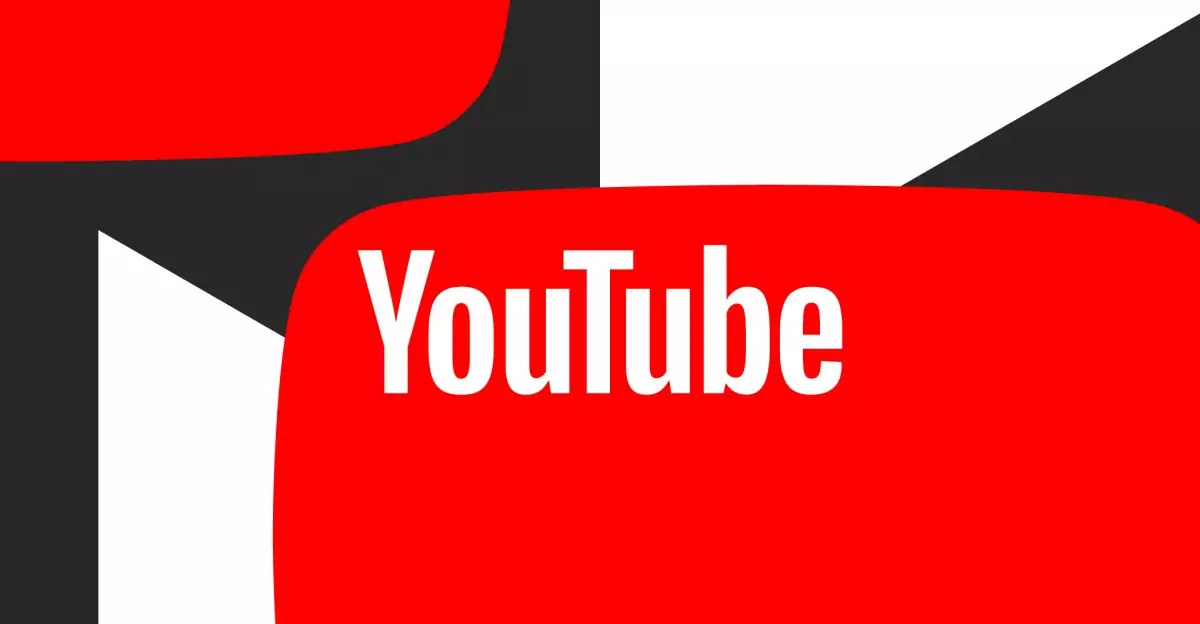In a significant development, YouTube has updated its content moderation policies to allow certain videos that could potentially breach its community guidelines to remain accessible, provided their value in promoting freedom of expression outweighs the potential risk of harm. This nuanced approach marks a shift away from the stringent regulations that characterized the platform’s past, particularly during the tumultuous years of the Trump presidency and the global pandemic. By recognizing the complexities of public discourse, YouTube is making strides toward a more inclusive space for varied opinions and discussions.
The platform’s updated guidelines, reported by The New York Times, indicate that content moderation is no longer a straightforward binary of acceptable versus unacceptable. Instead, YouTube is instructing its reviewers to take into account the broader implications of the discussions reflected in user-generated content. Videos discussing crucial social issues—like race, gender, abortion, and immigration—are now prioritized for their potential to contribute to essential conversations, even if they contain elements that breach platform rules.
Public Interest: A New Lens for Content Value
This major overhaul comes with stipulations designed to anchor the concept of “public interest.” Videos can remain online if they meet the threshold where less than fifty percent of their content violates community standards, increasing from a previously stricter one-quarter threshold. This change underlines YouTube’s recognition that some content holds significant societal value, even if it diverges from established guidelines. Such a stance invites criticism and praise alike, igniting discussions on where the line should be drawn in the pursuit of free expression versus the responsibility to prevent harm.
YouTube’s spokesperson, Nicole Bell, articulated the platform’s evolving approach, asserting that the definition of public interest is dynamic and should reflect contemporary dialogues. This perspective resonates with the growing sentiment among users and creators who have voiced frustrations over oppressive moderation practices that stifle genuine discourse. However, this new direction has also stoked fears that it may inadvertently normalize the spread of misinformation under the guise of public dialogue.
The Broader Context: Moderation Trends Across Platforms
Interestingly, YouTube’s policy adjustment mirrors broader trends seen across social media platforms. Meta has similarly relaxed its moderation guidelines surrounding hate speech and misinformation, pivoting towards a model that emphasizes community-driven scrutiny rather than imposed authority. This shift can be attributed to a shifting landscape of public sentiment towards social media governance, reflecting a desire for a more democratic approach to content creation and consumption.
The influence of political climates, especially during election cycles, cannot be underestimated in shaping these policies. With the anticipation of the 2024 US elections looming, platforms like YouTube are under heightened scrutiny and pressure from political entities. Interestingly, YouTube has previously faced backlash for its stringent policies during election fraud disputes, underscoring the vagaries and complexities of governance in tech.
The Balancing Act of Free Speech and Responsibility
The current state of YouTube’s moderation strategy reveals a precarious balancing act—one that attempts to uphold freedom of expression while simultaneously navigating the perilous waters of potentially harmful content. In doing so, YouTube places itself at the nexus of a broader societal debate on the role of digital platforms in guarding against misinformation. YouTube’s fight against false narratives, particularly concerning COVID-19 and election integrity, highlights the critical tensions that arise when user-generated content collides with public health and democratic principles.
Yet, the recent leniency raises a critical query: Are platforms equipped to handle the fallout of this modified approach to moderation? The risk of allowing misleading content under the banner of public interest introduces challenges, particularly for less informed audiences who may struggle to discern credible information from harmful misinformation. Users must now navigate a more labyrinthine landscape, one where the potential benefits of free speech must be weighed against the ramifications of spreading falsehoods.
This evolving dialogue around content moderation encapsulates the essence of the digital era we inhabit; a manifestation of our collective struggle to find common ground in an increasingly polarized world. YouTube’s recent policy update might be seen as a daring move towards prioritizing diverse viewpoints, yet it demands critical evaluation of its implications in fostering an informed public discourse.


Leave a Reply